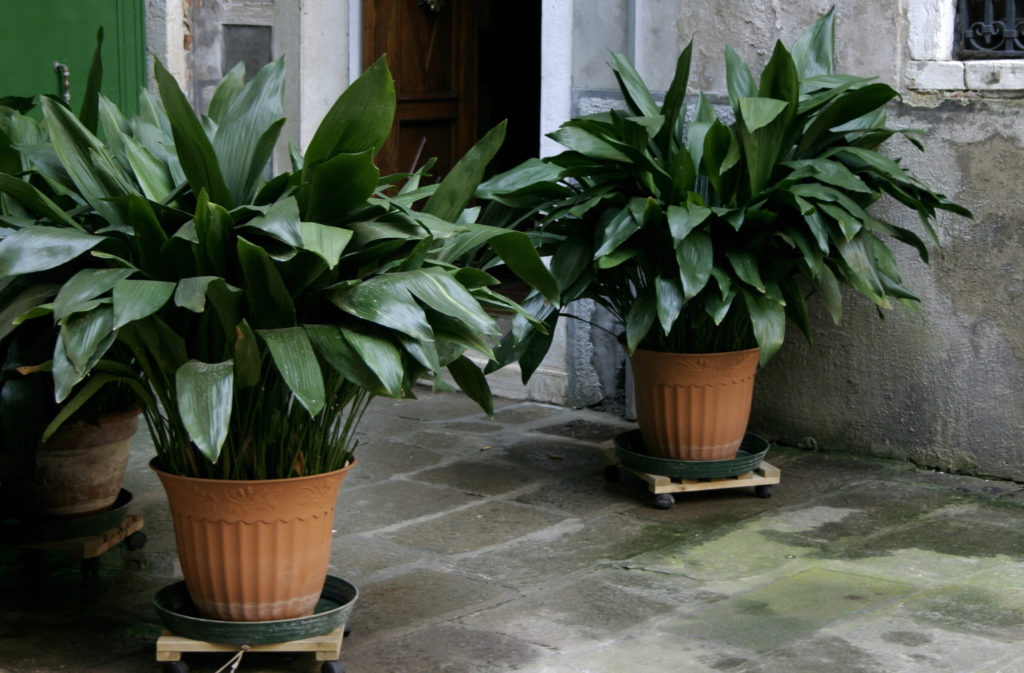
The easiest indoor flowers to care for. Hardy flowering houseplants
Today, the editors of Useful Tips will tell you about indoor plants that take root perfectly in dark rooms and do not require special care. They will help freshen the air in your home and decorate any corner of it with the charm inherent only in greenery.
Which plants to choose for poorly lit rooms
1. Aglaonema
Aglaonema is a great choice for beginners. She is unpretentious and feels great in dark rooms.
2. Aspidistra elatior
Resistant to shade, cold and heat, this plant will only test your patience for one reason - it develops more slowly than other plants.

3. Calathea
Calathea will surprise you with a variety of leaf colors and will become a chic home decoration. Due to the fact that this plant does not tolerate the sun, the best place for it will be rooms with poor natural light.
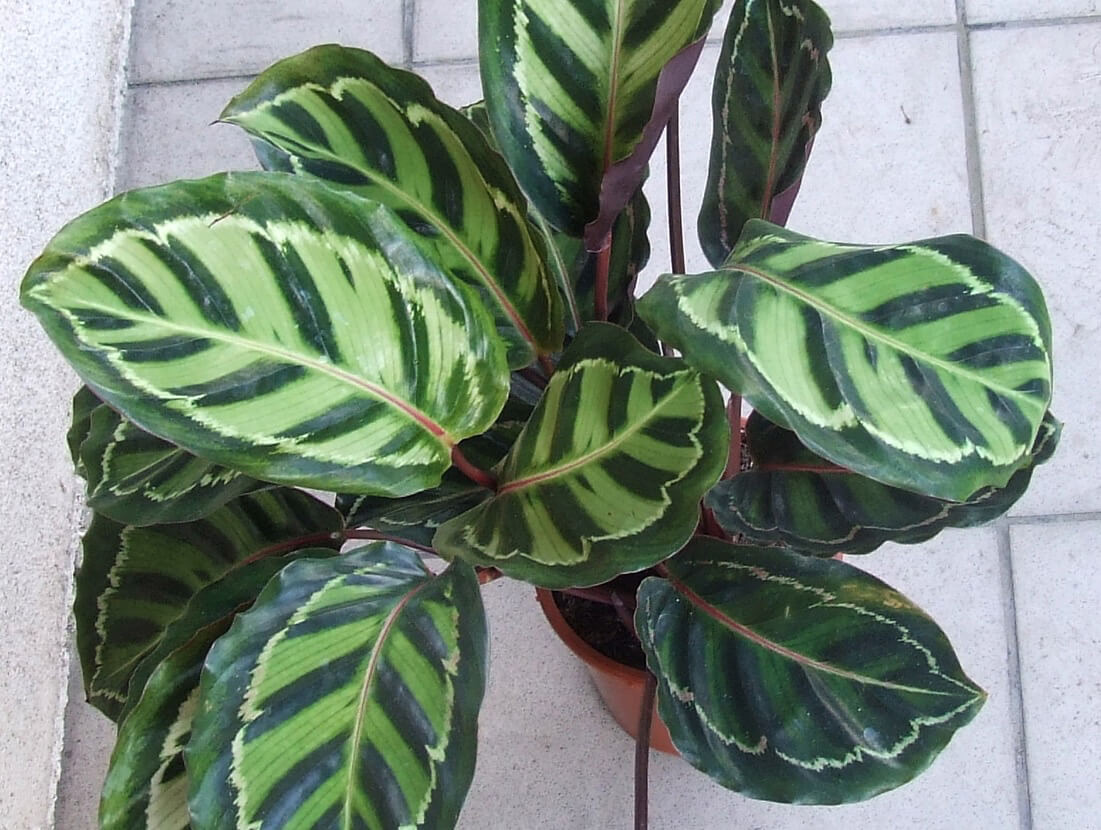
4. Chlorophytum comosum
This plant perfectly cleans the air, does not require a lot of light and special care. Therefore, it can often be found in apartments and public institutions.
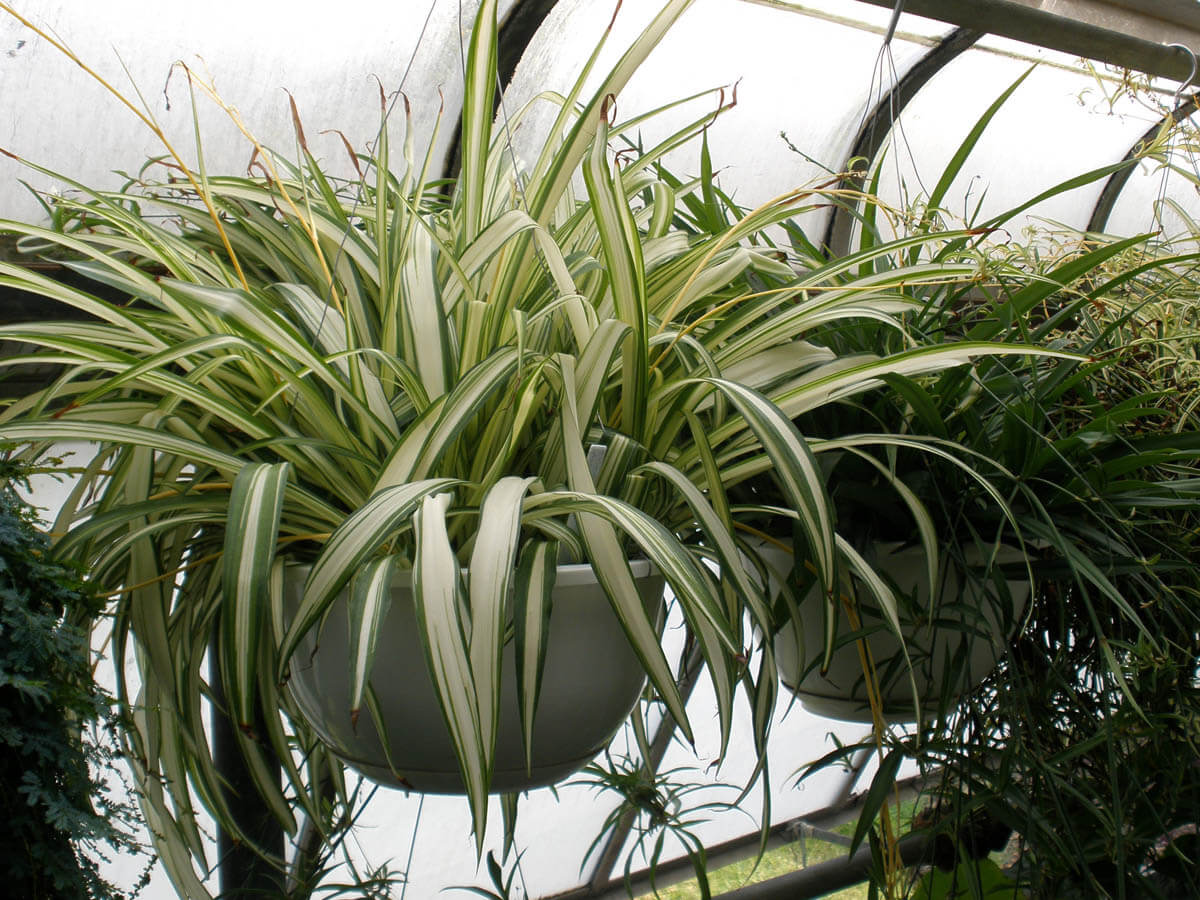
5. Dracaena
Despite the fact that the dracaena resembles tropical palm trees, direct sunlight can simply burn its leaves. Therefore, place it where it will be protected from light.
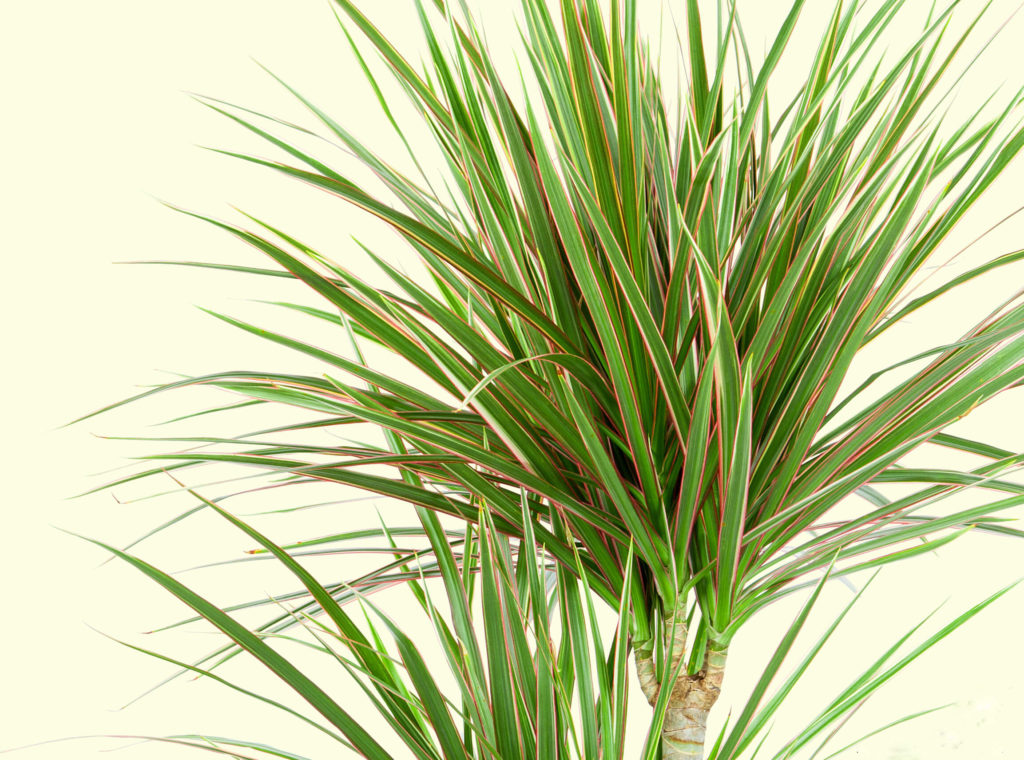
6. Dieffenbachia
Not requiring special care, dieffenbachia will decorate any interior. It does not require much sunlight, so it survives well even in rooms with closed curtains.
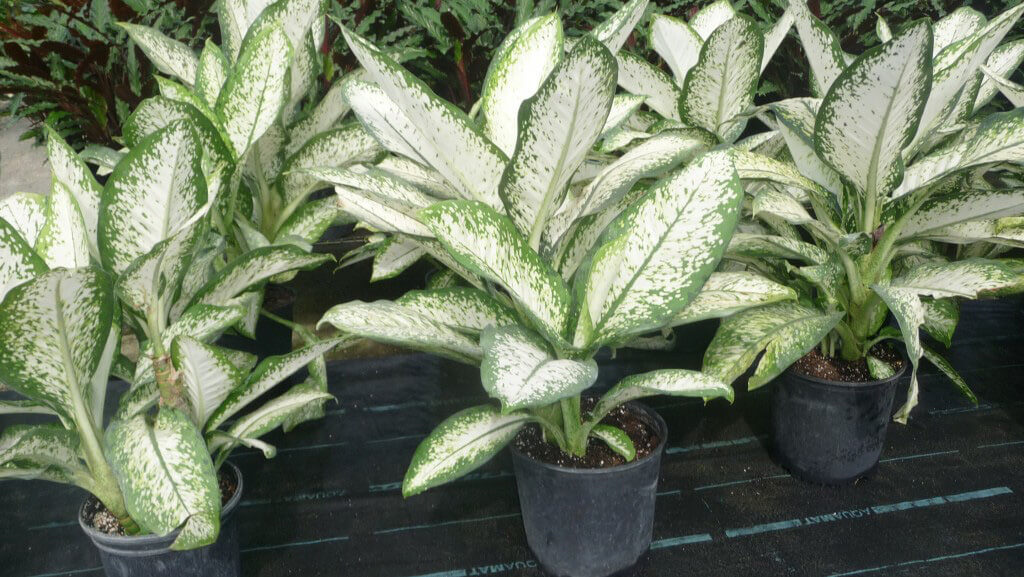
7. Neoregelia
This plant, belonging to the genus Bromeliad, is content even with artificial light, so it will be an excellent choice for the bathroom.
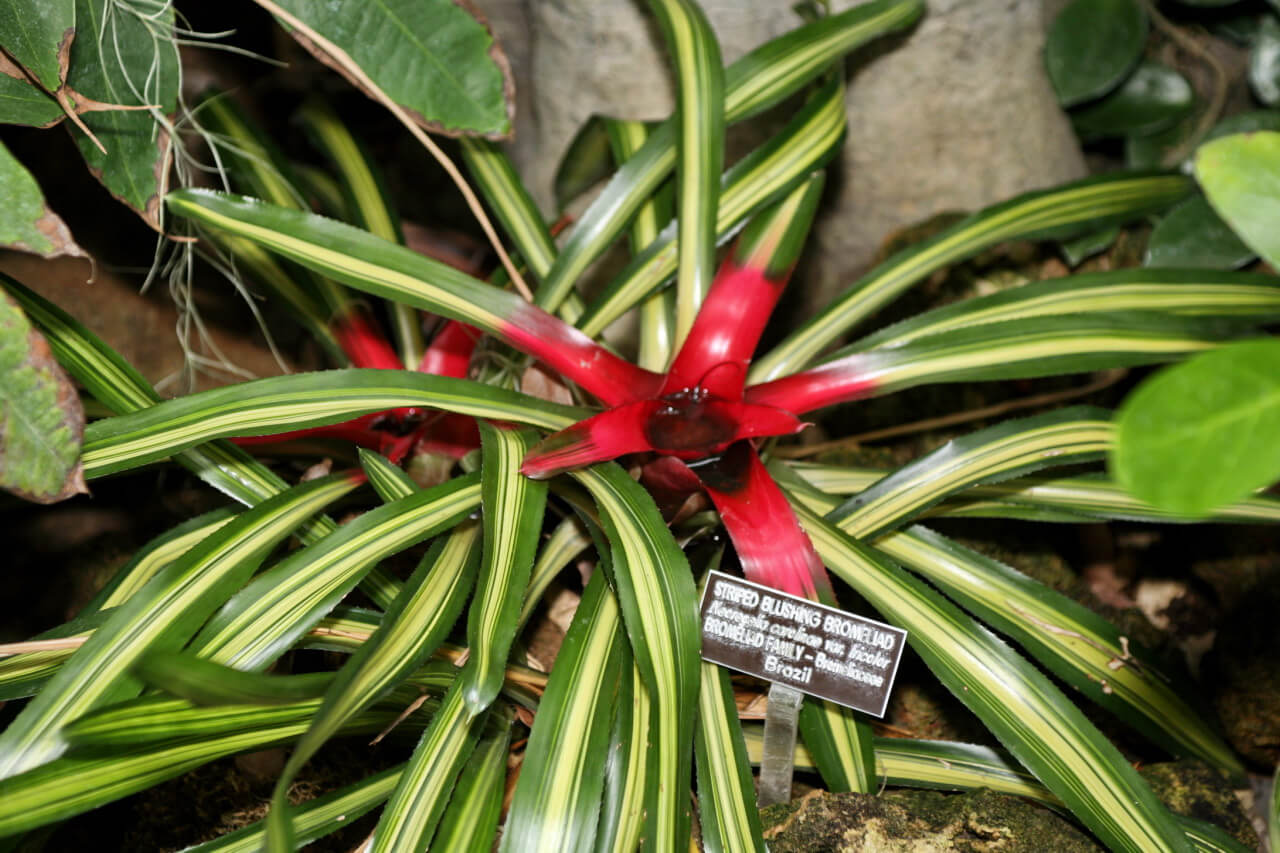
8. Philodendron cordatum
This plant has taken a special place in the hearts of gardeners. Probably because it gets along well in dark places and perfectly cleans the air. We recommend removing some leaves to speed up its growth.
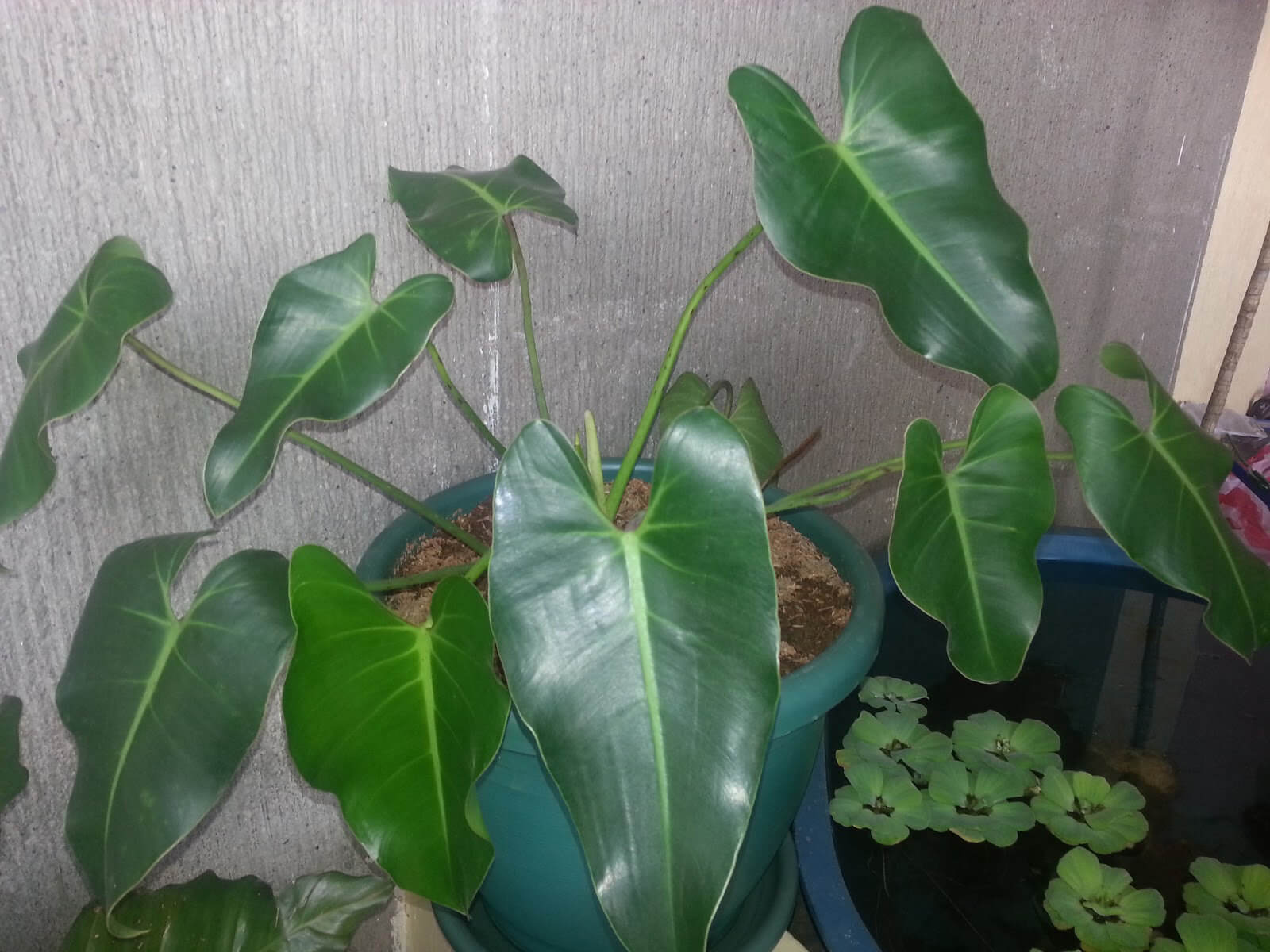
9. Fern
All fern-like plants will be an excellent solution for those who want to decorate rooms with poor lighting with plants. Unpretentious to sunlight, they require a lot of water. Therefore, water your ferns well and spray their leaves periodically so that they delight you with lush greenery.
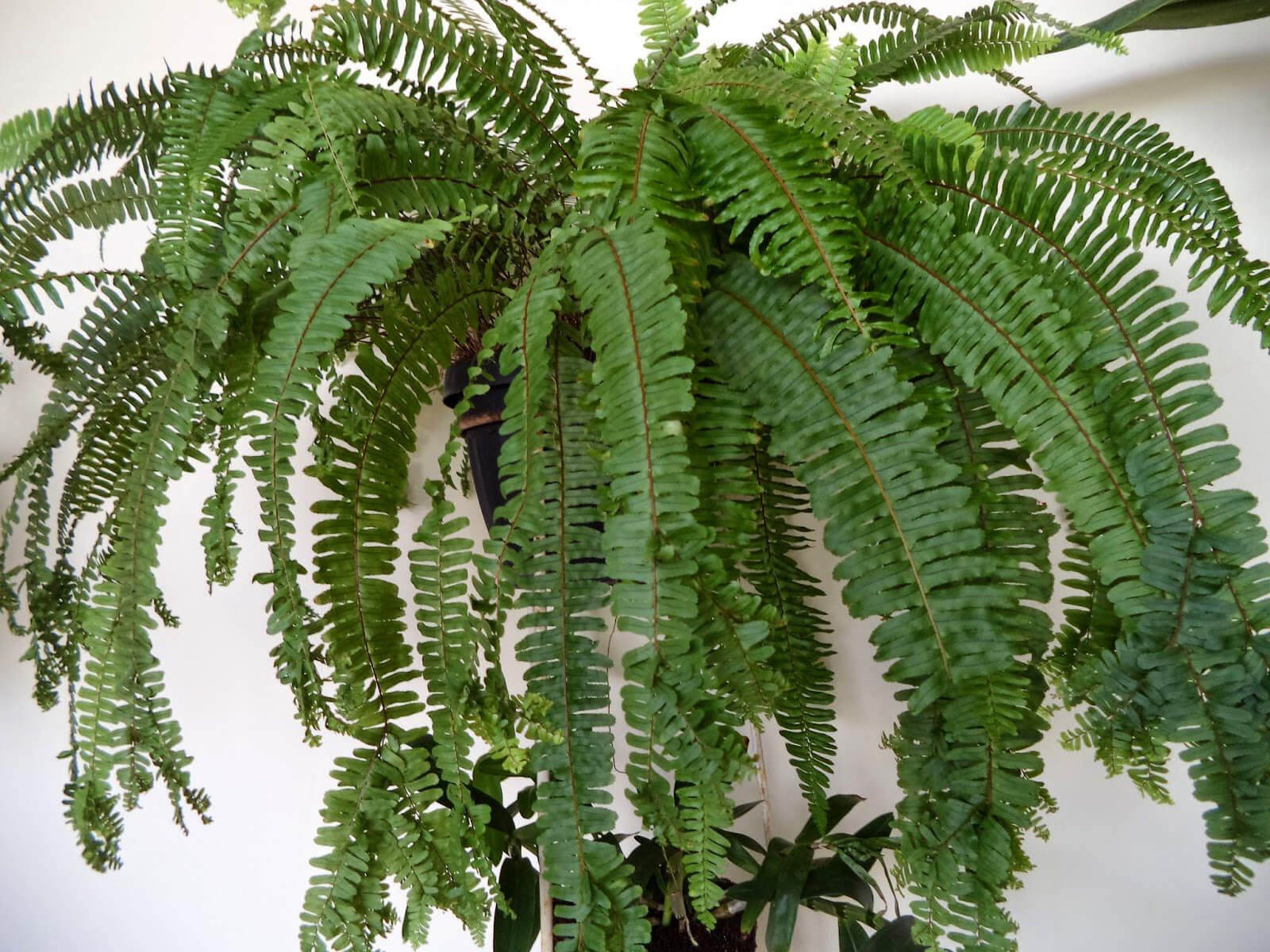
10. Sansevieria or Teschin Language
A very unpretentious sansevieria is not afraid of the dark. Perhaps that is why she was so attracted to lovers of indoor plants.
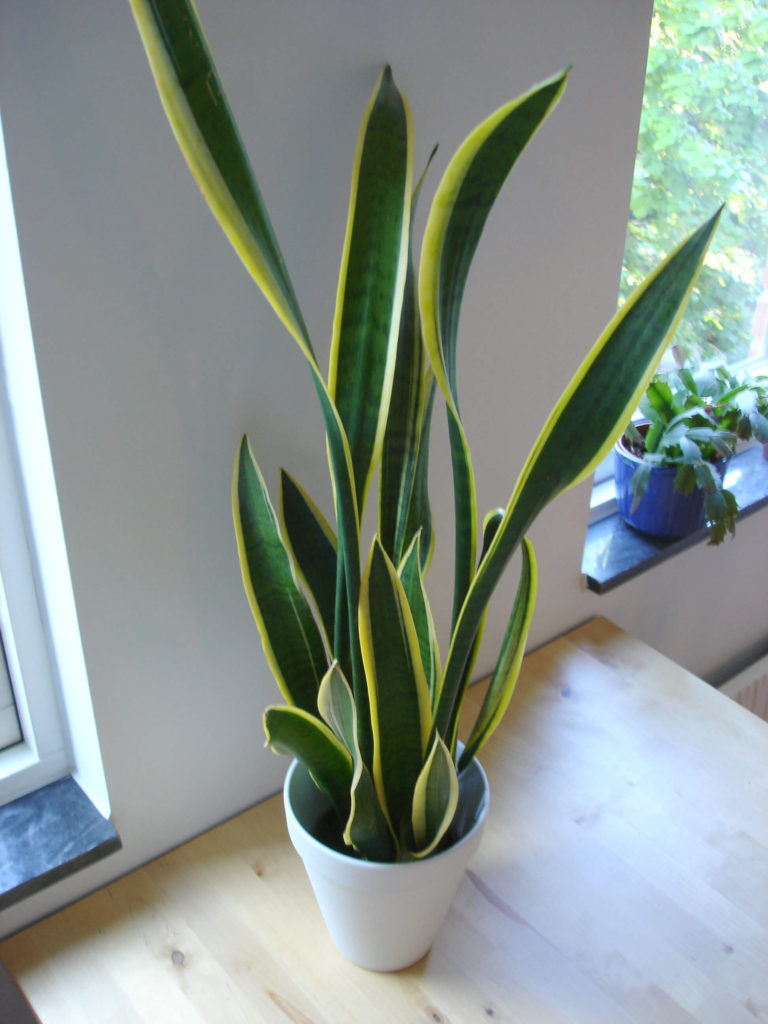
11. Soleirolia soleirolii
This plant is called "baby tears" due to its small leaves. She needs a lot of water, so we do not recommend planting her in the same pot with other plants.
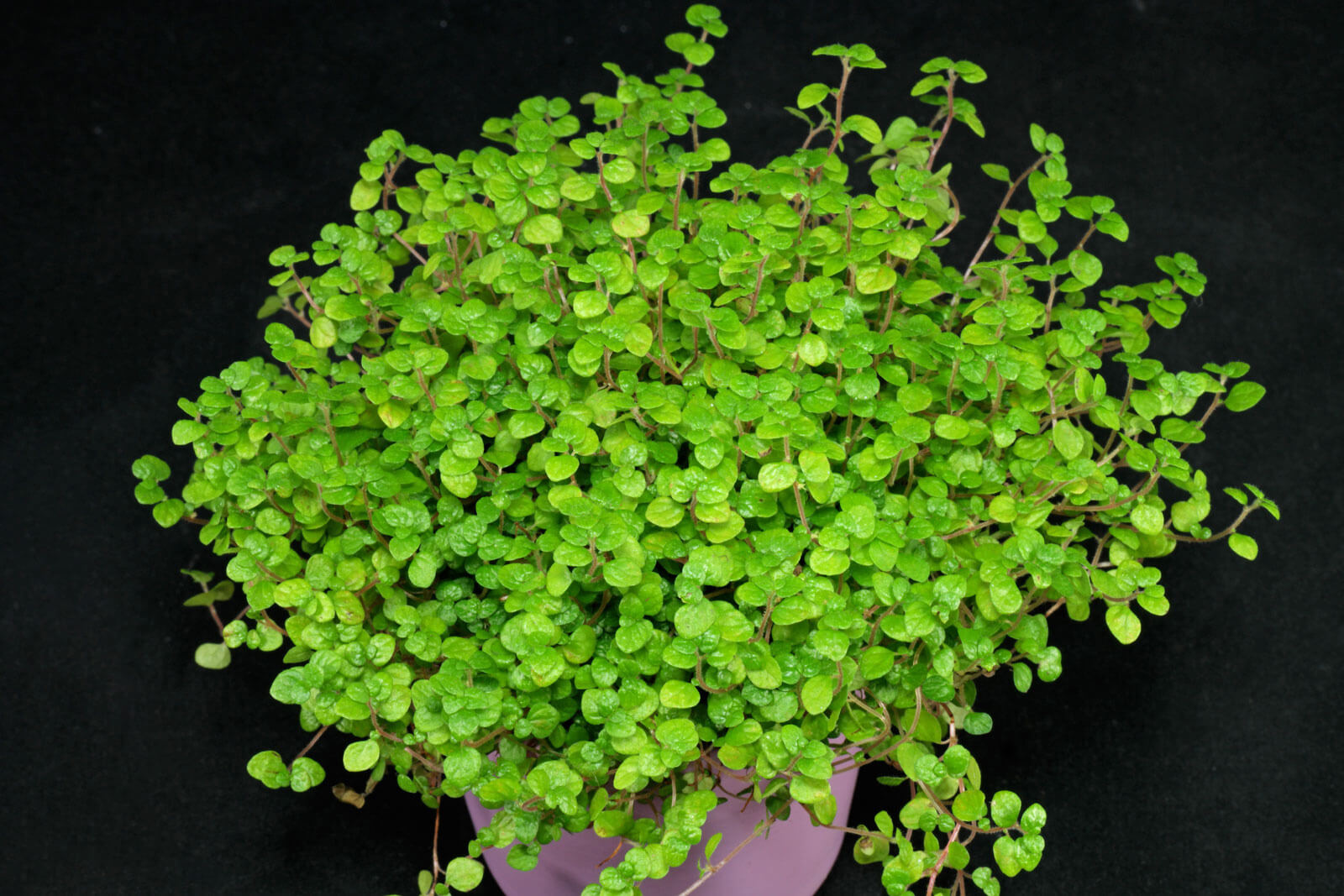
12. Spathiphyllum
Spathiphyllum is unpretentious in care, does not require direct sunlight or regular watering. Therefore, he will pleasantly surprise those who often forget to water their indoor plants.
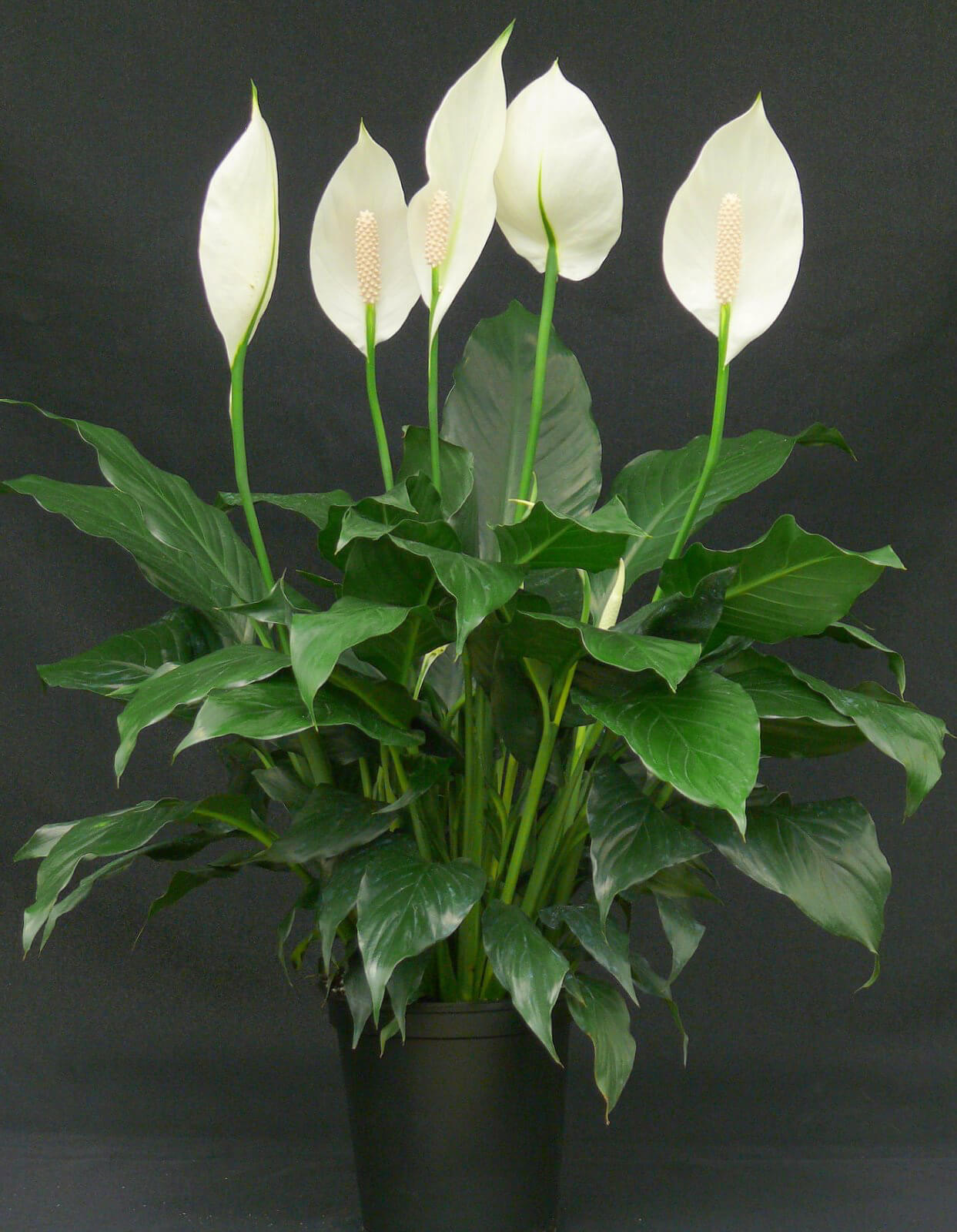
Watch the video and learn more about plants that don't need a lot of sunlight to thrive.
Did you like our Helpful Hints? Then share this article with your friends so that we can write more articles about indoor plants for you.
Hello dear flower growers! I love houseplants very much. Only now the air in my apartment is dry. So, my favorite orchid began to wither and turn yellow leaves. I had to give a flower to a friend. I don’t really want to humidify the air with some modern means, I don’t have time for spraying, I work all day long. Is it really necessary to completely abandon the cultivation of flowers? Advise how to be?
L.N.
There is absolutely no reason to give up growing houseplants. You just need to choose flowers that are not afraid of dry air, while they are beautiful and take very little time to care for. We offer you a plate of cheerful and unpretentious greenfinches, which will be happy to be placed on your balconies and window sills.
| Plant | Humidity | Watering | spraying | Lighting | Temperature | top dressing | Transfer |
|---|---|---|---|---|---|---|---|
| Tolerates dry air well | Moderate, avoid excess moisture in the soil | Not required. Wipe the leaves with a damp cloth | Direct sunlight, diffused light, partial shade and shade | Preferably room. In winter it can withstand up to +15, in summer + 25-28 degrees | Once a month with fertilizer for cacti in the spring and summer | Spring if needed | |
| Resistant to dry air | Moderate. In winter - once a week, in summer - twice. | Not required. Warm showers are allowed once a month | Withstands both sunlight and shade | Not lower than +8 degrees, in summer +15-18 | Once a month, from May to October | As needed, 2 years after purchase or transplant | |
| Yucca ivory | Can tolerate dry air | Moderate, decreases in winter | Not required | direct sunlight | Room. In winter it withstands + 10-12, in summer-spring + 18-26 degrees | Once a month cactus fertilizer | If necessary. Trim side shoots |
| Tolerates dry air | Moderate, in winter no more than 1 time per month | Not required. It is allowed to remove dust from the leaves with a damp cloth. | scattered sunlight | In winter up to +15 (avoid heaters nearby), in summer-spring +20-25 degrees | Once a month with an all-purpose fertilizer or cactus fertilizer | Once a year | |
| zonal | Resistant to dry air | Abundant in summer, limited in winter. Avoid waterlogging the soil | Not required | Scattered sunlight. Keep away from sunburn | During the dormant period (from October to February) + 12-15 degrees, spring-summer period + 20-25 degrees | In spring and summer, once every two weeks, in liquid form on moist soil | Not more than once every two years. In the spring, prune the bush |
| elastica | Carries dry air | Moderate, dry | Soft water in summer | scattered light | Room. In winter it withstands + 14-16 degrees, in summer-spring + 18-23. Protect from drafts | Once every 2-3 weeks with fertilizers for decorative and deciduous | Spring (period of active growth) as needed |
| Hoya | Dry resistant | Moderate. Avoid complete drying of the soil and excessive moisture | Spraying in summer, at high temperatures | Scattered light. Avoid sunburn | In winter +15-18, in summer +22-25 degrees | In summer, 2-3 times a month | Adult plant - no more than once every 3 years |
| Mile | Tolerates dry air well | Moderate, scarce in winter | Not required. Avoid getting water on the leaves and stems | Bright sunlight, direct rays | High air temperature. In winter - up to +18, in summer-spring + 20-24 degrees | During the flowering period - from spring to autumn, feed with fertilizers for cacti about 3 times a month | Of necessity |
| (dollar tree) | Hardy, calmly tolerates dry air | Watering is plentiful, but rare. In winter - reduce | Not required. It is allowed to periodically wash the leaves | scattered sunlight | Room temperature is preferred. In winter +16-18 degrees | Once every two weeks in spring and summer. You can use fertilizer for cacti | Replant young plants once a year, in spring. Then reduce (after 3 years) |
| Resistant to dry air in winter, but moisture-loving in summer | In spring and summer - plentiful, in winter - scarce | Not required in winter. Spraying required during summer | Diffused light, but calmly tolerates shadow and partial shade | +18-23 degrees | Once a week in autumn and spring, the rest of the time - once every 2 weeks with fertilizers for flowering plants | Annually (once a year) in the spring |
Do you forget to water them, never feed them, think that “the pot is small, but expensive”, even if the flower has grown, and do not see any harm in the fact that it “warmed up” near the battery? Then our hit parade of sixteen universal plants is for you!
There are many beautiful houseplants, for all tastes and requests, and from time to time one or another becomes very popular. But it is not a fact that these plants can be successfully grown in your conditions. It is better to choose the most unpretentious plants, they will not let you down! These are plants that tolerate dryness and high temperature in the apartment in winter, the presence of dust, and also put up with shading, their care is minimal. At the same time, unpretentious plants are very beautiful, among them there are many flowering plants and plants with decorative foliage.
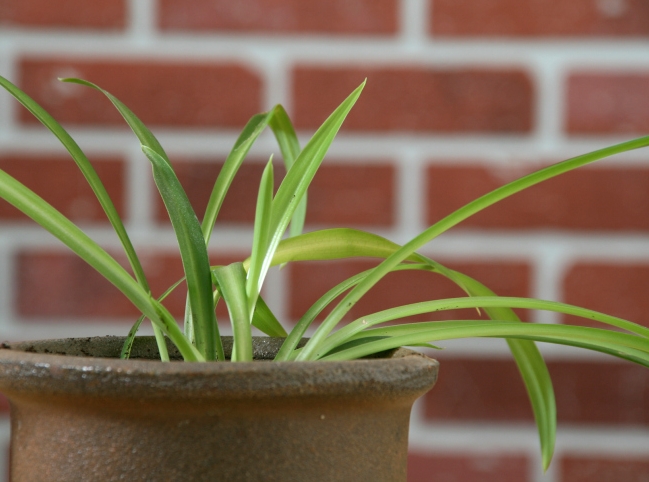
1. Chlorophytum crested (sedge)
This is the first number in our hit parade of the most unpretentious plants. That's who is really able to grow almost without our "participation"! Chlorophytum perfectly tolerates dry air and high room temperature. It is not very picky about lighting - it loses its decorative effect only in a very dark place. Often it is not necessary to water it, and chlorophytum is practically not affected by diseases. Requiring no special care, it amazing plant day and night cleans the atmosphere of the apartment from harmful impurities and electromagnetic radiation. Its curved leaves form a beautiful wide rosette, and from time to time, daughter rosettes grow on long peduncles that can be rooted.
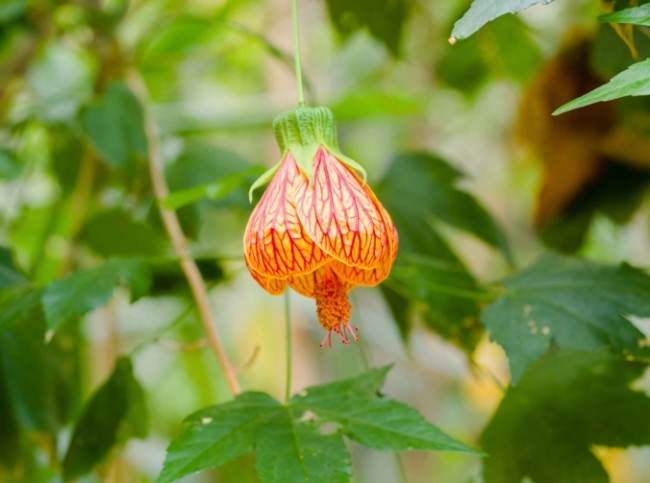
2. Abutilon (indoor maple)
An unpretentious plant and at the same time a beautiful dominant in the interior. Abutilon blooms spectacularly: its large flowers are bell-shaped. Its leaves are similar to maple, and the flowers are very catchy. They come in different colors: white, pink, yellow, red. Abutilon tolerates dryness and heat in the apartment, and you can put a pot with this plant both on the windowsill and at some distance from it. You need to water a little - otherwise it will not bloom. Abutilon is rarely fertilized - once every three weeks with liquid fertilizer for indoor flowers. Abutilon creates a favorable climate in the room: it purifies and humidifies the air. However, this unpretentious plant needs space, so it is better to place it in a large room.
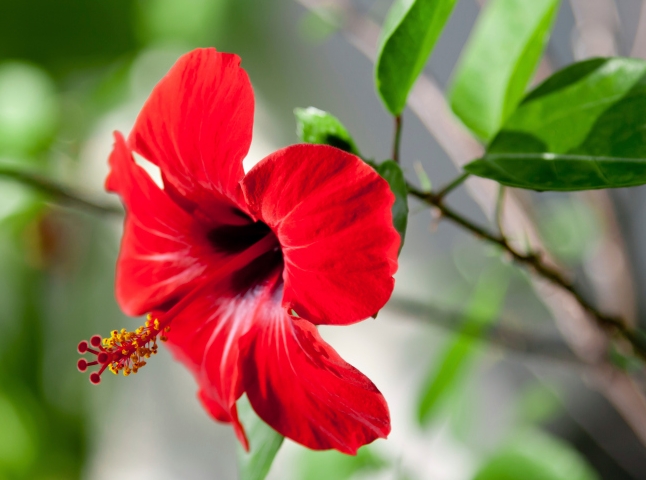
3. Hibiscus (Chinese rose)
The plant is a sprawling bush with huge bowl flowers, most often red, with a long pistil. However, the plant has many varieties, there are both white and pink flowers, and even - speckled! hibiscus blossoms all year round and loves just the temperature and humidity of the air, which happens in our apartments in winter. But he needs light - therefore, his place is on the windowsill. You need to water often and regularly feed, especially in winter, so that the buds do not fall off.
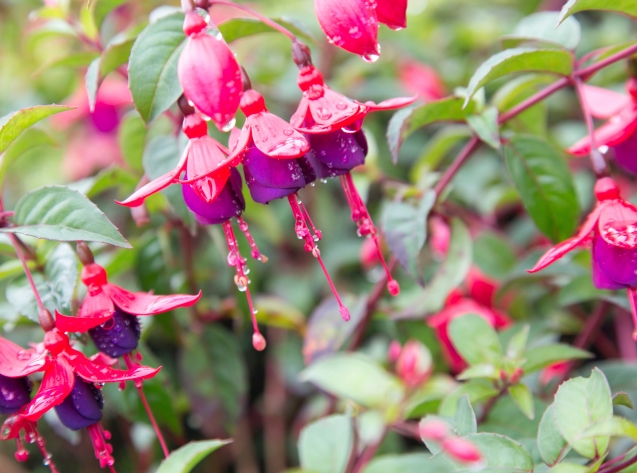
4. Fuchsia
Fuchsia is a flower in the "English" style, associated with the English interior and classics. This is a semi-shrub with lignified shoots in the lower part. Fuchsia grows well and blooms in bright, but not in sunny places (not on the windowsill, but at some distance from it), with abundant watering. The main thing is that the plant tolerates dry air. But in winter, keep fuchsia on the windowsill, as in winter it needs relative coolness. Feed the plant once a week. In summer, you can take fuchsia to the country house and keep it as a container plant. It is imperative to monitor fuchsia: sometimes it can be affected by a spider mite.
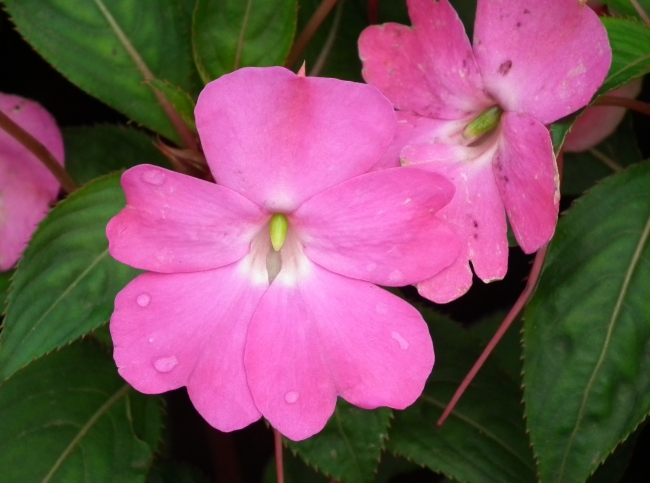
5. Balsam
Previously, this flower was called "touchy", because at the slightest touch, its seeds "shoot" far around the plant. Appearance- a compact bush that blooms with red or pink flowers. Moreover, the older the plant, the more abundant it blooms. There are varieties with variegated leaves. Balsam is very easy to care for. This flower prefers partial shade, tolerates dry air, its only requirement is abundant watering. Also, balsam loves periodic spraying, only in this case it is necessary to avoid getting water on open flowers. In severe frosts, when the air in the apartment is especially dry, a whitefly attack on the plant is possible.
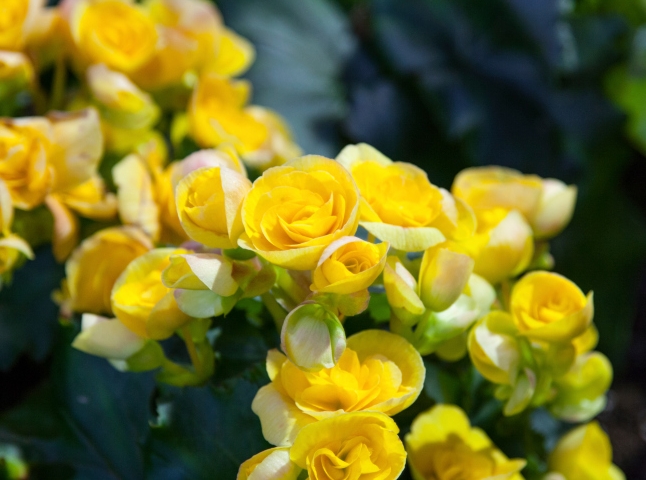
6. Begonia
beautiful flowering plant as if specially created for shaded places in the apartment. But the begonia does not like the bright light. There are many varieties of begonias, which not only bloom profusely, but also have spectacular variegated leaves. Begonias tolerate both heat and coolness equally well; they are also undemanding to the ground. Pests, as a rule, do not attack begonias. But they need high air humidity, but it is undesirable to spray at the same time: the leaves do not tolerate contact with water. Therefore, it is better to use a humidifier or put a tray with wet pebbles on the battery. Begonia roots should not dry out - the plant needs regular watering. For the summer, begonias can be transplanted into a flower garden in the garden.
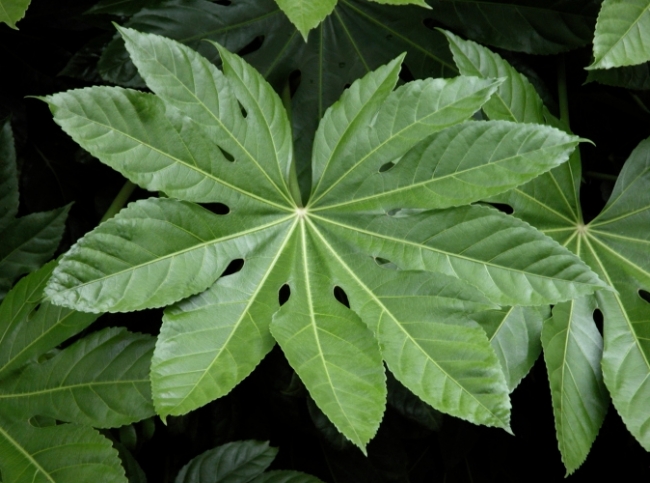
7. Japanese fatsia
Even if it seems that you have completely unsuitable conditions for indoor flowers, feel free to plant Japanese fatsia. It is a shade-tolerant plant, resistant to diseases and pests, with beautiful large leaves, similar to chestnut leaves. And even near the central heating radiators, she feels fine. At the same time, it well increases the humidity of the air, promotes good sleep, heals the heart and lungs. Fatsia is an energy "donor", so we will feel a surge of strength after spending some time in the room where she grows.
![]()
8. Pelargonium
Many mistakenly call this flower a geranium. On a sunny windowsill, they can bloom all year round with red, crimson, white or pink inflorescences. There are species with fragrant leaves. Pelargonium tolerates dry air well, and it needs moderate watering, on the contrary, waterlogging is the main enemy of the plant. In summer, pelargonium can be transferred to the garden as a container plant or transplanted into a flower garden, and returned to the apartment in the fall.
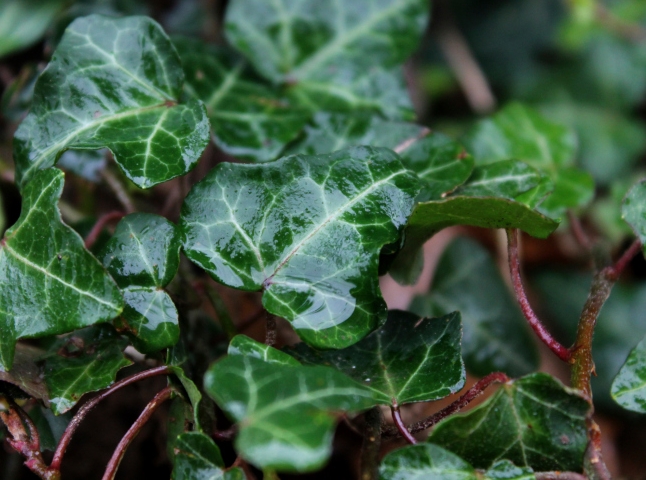
9. Climbing houseplants: ivy, passionflower, philodendron and cissus
These are very unpretentious and decorative creepers, they put up with the peculiarities of the microclimate in a city apartment. Ivy has many varieties, so its leaves can be triangular and lobed, and oval, and the color varies from simple green to a combination of green with white, cream, gray and yellow. Ivy tolerates dry air, but still spraying will not hurt him. Cissus belongs to the grape family, has a woody stem, its leaves are medium in size. It is the most resistant to dry air, tolerates dust well. Passiflora blooms beautifully, the leaves are palmate, medium-sized. Philodendron has elongated leaves, it needs periodic spraying in the same way as ivy. All these plants have a pronounced relaxing effect, not only due to their energy impact, but also because of the special substances they release.
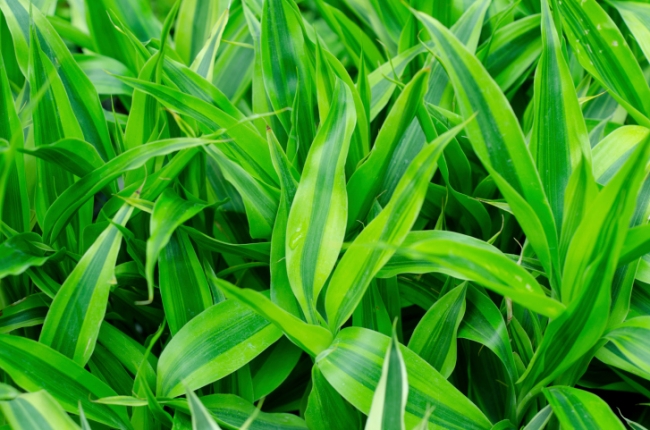
10. Dracaena
Dracaena resembles a palm tree, but has nothing to do with real palm trees. It's very stylish and unpretentious plant with their "secrets". There are many types of dracaena, and some of them can even withstand severe shading and negligence in care. She really likes harmful impurities, she absorbs them with pleasure, but the main thing is not even this - she is able to “pull away” many of our ailments, headaches, for example, and not only. It seems to “get used” to a person, and over time, more and more enters into energy contact with him, enhancing its healing effect.
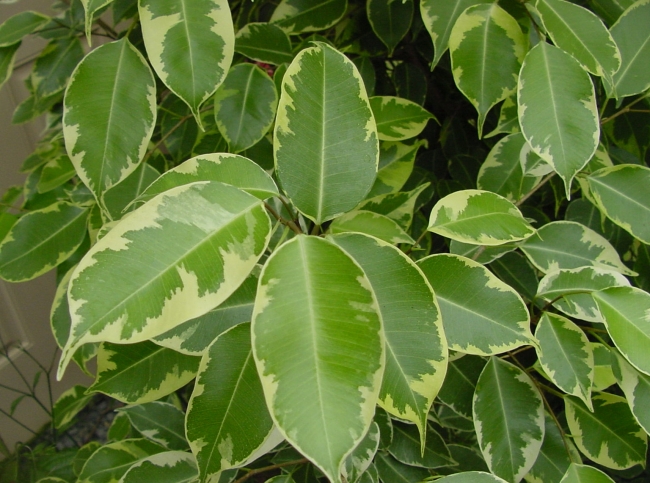
11. Ficuses
The ficus family can offer a wide variety of representatives for rooms. First of all, we can recommend Benjamin's ficus, rubber-bearing ficus, lyre-shaped ficus. These varieties are unpretentious, successfully neutralize harmful impurities from the surrounding air, and are suitable for most interior styles. But there is one more feature - their strong energy, which a person is able to feed on during sleep. Moreover, this energy is special, “soft” - it removes the fuss, nervousness, there is a feeling of comfort, coziness.
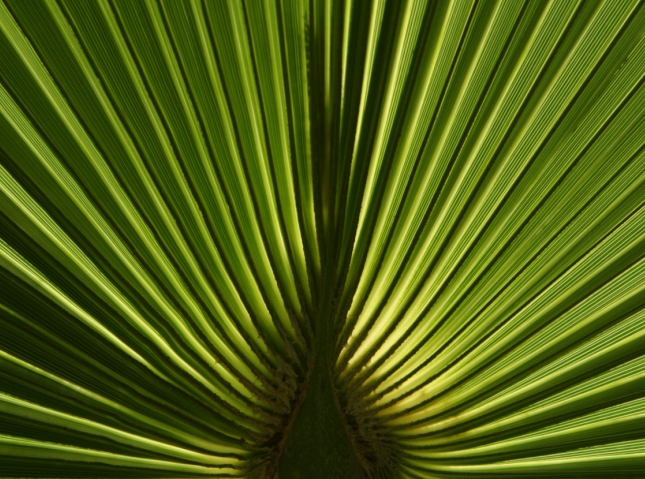
12. Palm trees
They are also unpretentious, the only thing is that they still require good lighting. But it is possible to place them closer to the window - a great option. I would especially like to highlight the Hovea Forster palm, the Canarian date and the graceful Hamedorea (mountain palm). They will fill and "enliven" any boring corner of the room, their graceful feathery leaves give lightness, airiness, ease to the atmosphere. They freshen the air and, like ficuses, “nourish” energetically. They can be placed in "ethnic" containers, decorate the soil near the trunk with stones, shells, etc. In general, any interior experiments are appropriate with palm trees.
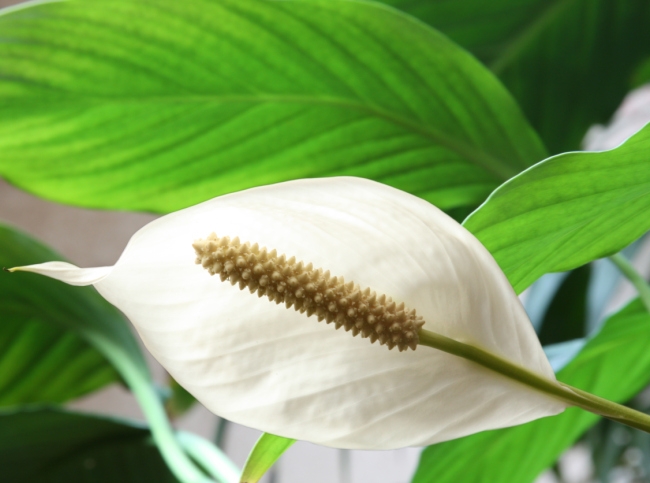
13. Spathiphyllum
A modest and elegant spathiphyllum periodically blooms without any tricks on our part. Outwardly, it is very similar to the white calla. The flower is shade-tolerant, does not require special care, only it does not like excessive waterlogging of the soil - the roots can rot. The plant perfectly moisturizes the air.
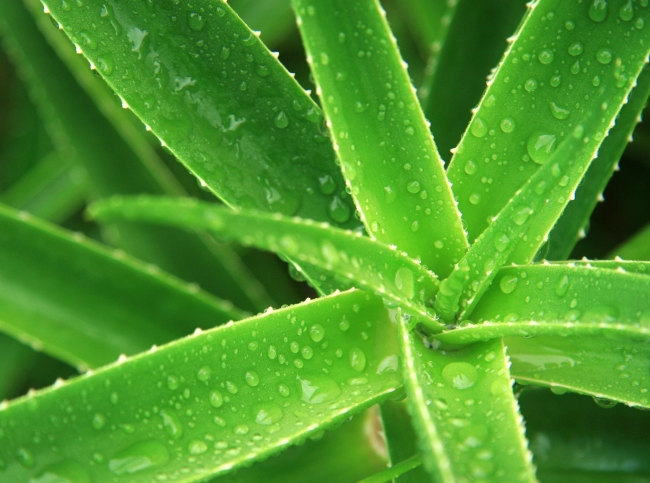
14. Aloe tree (the so-called "agave")
This plant is a succulent and absolutely undemanding to growing conditions. The only thing that is important for aloe is light, so you should not place it far from the window. Watering in summer should be as the soil dries up, and in winter - once a month. Aloe is a medicinal plant, and therefore it is worth having at least one copy.
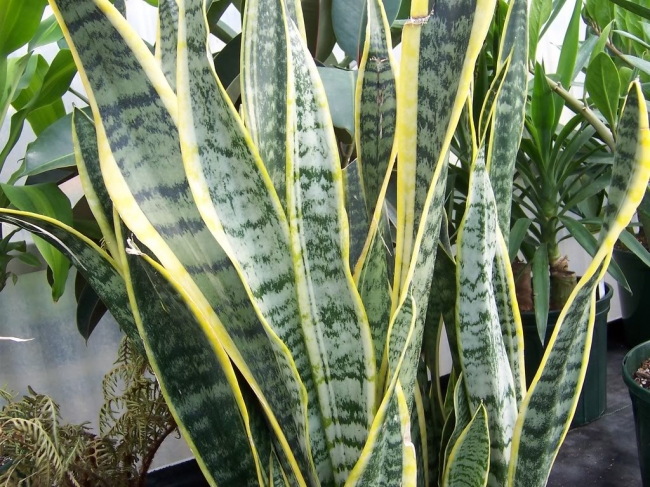
15. Sansevieria (or "pike tail", or "mother-in-law's tongue")
This plant, as they say, is indestructible. There are no problems with watering, or with the choice of soil, or with top dressing, or with dust - the plant belongs to succulents. Again, a champion in air purification and neutralization of computer radiation. His spectacular "swords" are of one color, and striped, and motley. Sansevieria is especially good "solo": about 8-10 plants in an appropriate container and a substrate decorated with pebbles or pebbles - that's something!
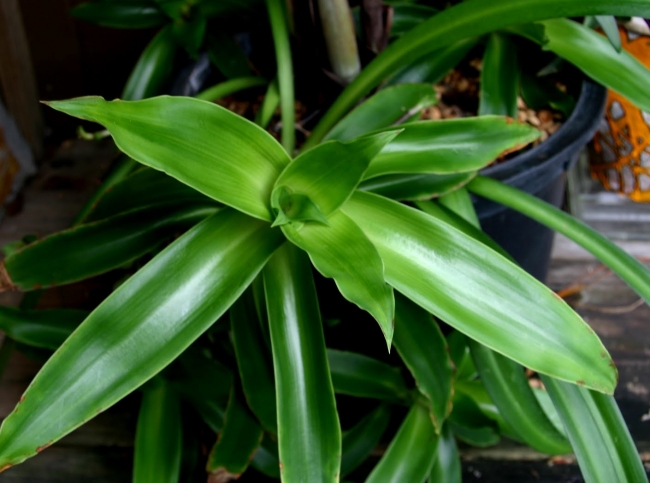
16. Fragrant callisia
It is also called "golden mustache" or "room ginseng". This is an ornamental leafy plant that looks like young corn in appearance. In addition to elongated leaves, callisia forms long shoots with articulations similar to joints. When 9 or more "joints" grow on one shoot, they turn purple and become medicinal. Such shoots can be cut and used for tinctures and decoctions. By the way, these shoots are especially good just for the treatment of joint diseases. Isn't that why such a figurative coincidence? Callisia grows under any conditions, even in the immediate vicinity of central heating radiators, and propagates very easily by rooting the cut top. Sometimes, however, you need to wipe its leaves from dust.
8 nos you'll have to tell an interior designer
Designers have many ways to make more money from your interior and make it beautiful for their publications, not for you. But that doesn't mean you don't need a designer. This means you need to know when to say no.
4 cool new technology that will break the market
Today we will tell you about four chic novelties for the home from one well-known brand that can make a small revolution. Although we are talking about "smart" vacuum cleaners, transparent refrigerators, double washing machines and pretty home robots
10 largest plants for the interior: where to put, how to care
Don’t like the interior of the house, but don’t have the funds to remake it? Dry air in the apartment? Do you often feel sad for no apparent reason? All these and some other problems can be solved with the help of ordinary potted flowers. Or not quite ordinary
Luxurious Art Deco interior, even with a gilded parrot cage
Do you want to see how the style of the American aristocracy finds its embodiment in a Moscow apartment? It seems to us that Hollywood stars will envy this interior.
How to store pans in an original way: 25 incredible ideas
There are never too many storage systems in the kitchen, any housewife will confirm this. It is always especially cramped in additional cabinets in small kitchens. Today we're looking at other space-saving storage options for pans and pots.
Modern two-room apartment with brick walls and black plumbing for a man
Not all men's apartments have to be dark. Brutality may well be in pastel colors with bright accents, and this project is a “living” proof of that.
Bathroom design: 5 luxury options
Tired of showers? Dreaming of a real bathroom? In today's article - photos of bathrooms that will inspire you to change! And also a great solution for how to put a bath even in a small room
How to increase the footage of an apartment during renovation: a stylish project from Kyiv
Are you not sure that you are ready for a colorful interior, but do not know how to make a beige apartment interesting? Take a look at this project and make sure that the interior in gray-beige tones can and should be stylish, cozy and very beautiful.
Planting garlic before winter is a responsible event, here you need to choose the right planting material, correctly determine the planting time, know the subtleties and rules, nuances and features. Let me start with such nuances. Garlic has two different forms: one is referred to as non-arrowing, the second is arrowing. What is an arrow? The simplest is the peduncle. The arrow is formed only by winter garlic, that is, the one that we sow in autumn.
Transplanting sooner or later is necessary for all indoor plants. But in the case of indoor large-sized, it is not carried out as long as possible, since this is not an easy task. And rarely, what adult plants need an annual transplant. In years when transplantation is not carried out, it is recommended to perform a mandatory procedure - a partial replacement of the soil. The topsoil is replaced both for hygiene purposes and to maintain the normal state of the substrate.
Winter pickled cucumbers, crunchy, jarred with garlic, onion and chili are another easy way to prepare savory vegetables for winter. There are many recipes for pickles and marinades, even a lot. This recipe has a twist that is intended for spicy lovers: add a pinch of cayenne pepper to the marinade, and a green chili pod to the vegetables. Such cucumbers, ladies forgive me, will appeal to the strong half of humanity - an amazing cold appetizer.
The vast majority of gardeners, especially summer residents, after the end of the berry picking season, forget about their shrubs until next spring and, at best, feed them after the snow melts with a handful of nitroammofoska or weed them, removing the rapidly growing couch grass. This fate befell the black currant. Although outwardly the culture seems to be a healthy and strong shrub, it also requires care and attention. And especially in the autumn, when there is a long winter ahead.
Hydrangeas - shrubs are not only fashionable, but also irreplaceable. They are used both in urban landscaping and in private gardens, paying tribute to the bright foliage, pastel colors of the inflorescence caps and stable decorative effect. Most often, hydrangeas are planted in groups or singly, mixing with other bushes and trees. Meanwhile, perennials will also be able to keep these garden princesses company, with the help of which you can create colorful, stylish and expressive combinations.
Lentil cutlets with chanterelles is a delicious, original hot dish that can be served for dinner with a side dish of mashed potatoes and a thick white sauce. If you want to surprise your guests and family, cook these tender meatballs. You can replace chanterelles with champignons, because it is not every month that you will meet in the forest or on the market exactly “forest gold”. I cooked cutlets from Canadian green lentils, they are cooked in about half an hour. Regular lentils need to be soaked in advance.
In the current season, alas, there is no record apple harvest: the rainy and rather cool summer, which looked like a mixture of autumn and spring, interfered. But still, there is a harvest, it is tangible, and if we do not want the harvested apples to spoil in a couple of weeks, they must be properly stored. They say that with proper storage, an apple can lie for several years, retaining its varietal qualities and properties, but why should we wait so long to taste it?!
One of the most original types of indoor blehnum ferns is rightfully considered one of the most capricious. Its thermophilicity and humidity requirements have turned this relic plant into a real legend. Blekhnum, or derbyanka in the room - the fern is not for everyone, but it is surprisingly beautiful. Enough large sizes and vayi leaves vaguely reminiscent of palm trees will easily outshine any other decorative leafy plant in your interior.
Zucchini fritters with cheese and garlic are a delicious dish worthy of a Sunday breakfast, especially during harvest season. Pancakes are a useful thing, you can’t prepare them for the future, but you can completely eliminate part of the crop with benefit. For a family of three, one medium-sized vegetable weighing up to 1 kilogram minus cleaning is used. From this amount, you get an impressive appetizing slide of pancakes, which will famously leave with sour cream while watching the Sunday morning show.
Mixed ridges and narrow long flower beds along the paths and walls are in fashion today. And although this is the most colorful, it is not the only design option for colorful plant frames of various functional purposes. Sometimes it is not advisable to break even the smallest ridge about half a meter wide; the design requires greater rigor and “subtlety” of the plant line. A narrow and neat border of one plant is the most obvious, but the only way out.
Now is the very beginning of autumn, the whole crop has not even been harvested from the site yet. But you may not believe that in order to ensure the harvest of the next season, the vacated soil, for future beds, is already time to start preparing. And this is not a joke at all: you need to prepare this soil correctly so as not to be disappointed in the next year's harvest. How to prepare the beds, how to properly dig and fertilize the most common vegetable crops right now, we will tell you today.
Pickled cucumbers in circles with citric acid are garnish cucumbers, the cooking principle of which I somehow spied on in one TV show. They showed a large factory where cucumbers are pickled for hamburgers. These are really excellent side dishes, which are indispensable in cases of emergency, when there is no time to cook dinner, but you need to feed your family. On a plate with mashed potatoes and sausages, he put a hill of cucumbers with onions - and it's already delicious!
Proper nutrition for indoor plants - one of the factors of their normal development. Fertilizers are often misunderstood as just a flowering or growth aid, but their significance is much more important. Plants obtain substances from the soil and air. But in a limited amount of substrate, they depend on whether top dressing is carried out correctly and what fertilizers are used. For pets, both macro- and microelements are equally important.
Homemade tomato juice, in the recipe of which a blender is used, is simple, tasty and within the power of any housewife. I don't use a juicer. Frankly, it's just a pity for the place in the kitchen. This kitchen gadget is needed only a couple of months a year, if you are not a fan of freshly squeezed drinks, and it will take a shelf in the locker firmly and for a long time. An ordinary blender, and in the old days - a simple meat grinder and a sieve, solve the problem of making tomato juice at home.
Potash fertilizers, along with phosphorus and nitrogen fertilizers, are very important for plants, since potassium is a significant element for them, one of the three pillars on which the entire life potential of any organism rests, so the application of potash fertilizers should by no means be ignored, especially since there are many fertilizers that contain potassium, and you can choose the most suitable for the type of soil of your site and the plants growing on it.
Colorful symbols of summer, quivering, delicate, and at the same time so hardy, decorative poppies, leave no one indifferent. The inimitable colors and details of the structure of these amazing flowers are an invariable decoration of any garden in the summer. But the cultivation of decorative poppies is not a completely standard task, although not a difficult one. Poppies are propagated by seeds, and the choice of methods and methods of sowing allows everyone to find their own ideal option.